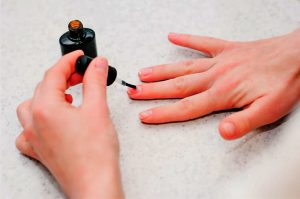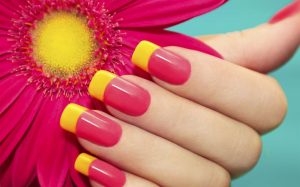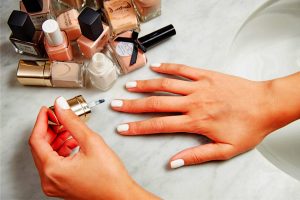How often should you get a manicure
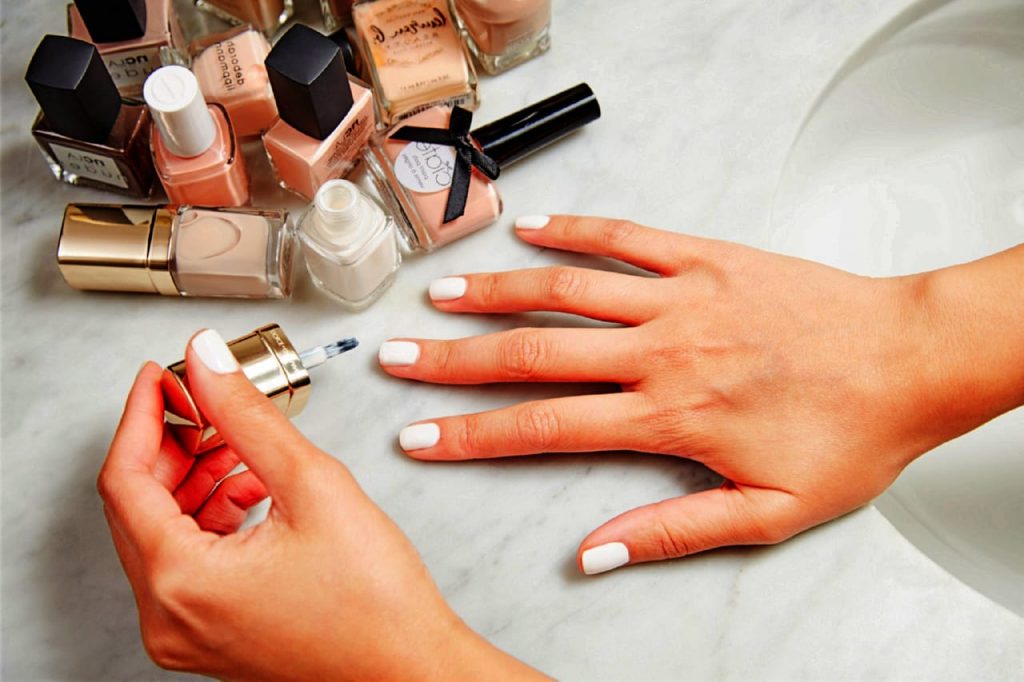
It is important for every fashionista to know how often to get a manicure so as not to spoil her nails. Regardless of what procedure was used for treatment, nails and cuticles eventually grow back, and the hands look ungroomed. Except that this time can be different for every woman.
Some are able to walk around with perfect nails for a month, while others have cuticles grow back by the end of the first week after visiting the salon. But each procedure has a certain regularity, because it is necessary to let the nails to rest and recover after treatment. In this article, we will tell you how often to get a manicure and what tricks will help delay another visit to the nail-master.
3 factors on which the frequency of a manicure depends
How often you need to get a manicure depends on the individual characteristics of your nails and hand skin. Each girl goes for correction at different intervals.
But there are several factors that affect the condition of the nails, and therefore the frequency of the procedure.
Occupation and lifestyle
Daily activities directly affect the condition of the coating, cuticles and skin of the hands. Office workers are not exposed to aggressive water and household chemicals during the day. Housewives or mothers of small children, on the other hand, have to cook, wash and wash all day long. They come into contact with household chemicals several times a day. From the frequent exposure to various compounds not only ordinary varnish peels, but also resistant gel. Standard coating begins to crumble after 2-3 days. The coating of gel varnish will last about a week.
But this does not mean that you need to sign up for a master in 2 days. You can remove the layer of nail polish yourself and apply a new one. If your hands are not in regular contact with water and household chemicals, you do not often visit the sauna or sauna, the standard varnish will successfully last up to 4-5 days. The wear period of gel nail polish reaches 2-3 weeks.
Physiological characteristics
How often to do a manicure also depends on the speed of regrowth of the nail plate and cuticle. You can observe how quickly your nail length increases. On average, the plate grows back 3 ± 0.5 mm per month, depending on your metabolism.
Keep in mind that the shape is also lost as the length grows out. To keep your manicure looking aesthetically pleasing, you should file your nails once every 7-10 days (not only the front part, but also the sides).
Cuticle regrowth rate
The skin around the nail plate grows at different speeds, as does the length of the nail. Some girls notice that already a week after manicure, their fingers lose their grooming. The cuticle grows, becomes rough, dense. The first thing to do is to find out the reason. Perhaps it is due to unprofessional actions of the master. Or maybe it is a feature of the epidermis. In both cases, you will need more careful care, the use of special creams, masks and oils to soften the cuticle and slow down its growth.
How often to do a manicure with gel polish
Gel-lac is a stable decorative coating, which lasts on the nails from 14 to 30 days. It became widespread in the salons of European countries, then began to gain popularity in Europe.
Today’s girls hardly ever use the traditional coating anymore. Fashionistas prefer to visit a salon once a month and get a manicure with shellac or gel-lac. Professionals say that high-quality gel does not spoil the nails. It consists of the following components:
- Photoinitiator – a harmless, non-toxic substance that protects the nail plate from UV exposure during drying in the lamp.
- Film-forming agent is a component that forms a thin film on the surface of the nail, and allows you to keep the quality of the coating intact for up to a month. Girls often have the question, how often should you do a manicure with gel polish? Are there certain rules? The period depends on many factors, but on average you can wear gel polish for 3-4 weeks.
- Color pigments, which make the shades of polish bright, saturated. The more of them, the better.
- Diluents – substances that ensure quality adhesion of the gel to the surface of the nail.
- A variety of fillers – these can be glitter of any color, shape, quantity, etc.
Advantages of use:
- An important advantage is that the gel polish is resistant to the environment and stays on the nail plate for a very long time. Depending on the manufacturing brand and quality, the coating can be worn for 3-4 weeks.
- In addition, gel polish is easy to apply, it is practical and economical.
- And finally, it looks beautiful on the nails, does not peel from the effects of water and household chemicals. With this polish, fingers and hands look neat and well-groomed.
Manufacturers also produce medicinal nail polishes that nourish the nail plate with vitamins, calcium, phosphorus, etc.
Masters recommend an interval of 14 to 30 days between corrections. Gel nail polish becomes harmful only if the master is negligent to the work, uses low-quality materials, does not comply with the rules. Too frequent application leads to thinning and drying of the nail plate, delamination.
When using low-quality gel polish adhesion to the nail surface is poor, which causes rapid peeling of the coating. Sometimes there is an allergy to the components of gel polish. Before the first application, you should conduct a test.
There is an opinion that the properties of gel varnish and shellac are similar. Gel dries under the influence of ultraviolet light in a special lamp. Shellac is more like a traditional varnish. There are no fundamental differences between the two coatings, except for the price. Shellac is a little more expensive than gel.
So what to choose? Gel is better applied, lies more evenly and lasts longer. Before applying it, you should cover the plate with a primer. It is not possible to remove the gel on your own. It can only be dissolved with special agents or be cut off with a manicure apparatus.
The peculiarity of shellac is that there is no need to grind the nail before applying it, which allows you to maintain its integrity. Many girls do not know how often to do a manicure with shellac. We recommend repeating the procedure once every 2-3 weeks.
Nail techniques that allow you to do manicures less often
European manicure
This type involves the treatment of the nail plate and the skin around it without cutting the cuticle. Fingers and hands look well-groomed and neat at once. European manicure does not allow the use of cutting tools. The only exception is the use of tweezers if there are burrs on the lateral rollers.
Therefore, the risk of injury is minimal. A variety of European manicure is an apparatus manicure. The cuticle is not cut, and the master removes dead cells from its surface with a special machine. Not all girls know how often they can get a hardware manicure. Professionals advise – no more than 2 times a month.
Spa manicure
The purpose of the procedure is to restore the skin and the integrity of the nail plate. It is performed in beauty salons or at home. It is suitable for people with weakened, brittle nails, increased skin dryness.
How often to do manicure in a spa salon? About once every 2-3 weeks, depending on the condition of the nails and hands. This kind of care is especially relevant in the fall and winter. At this time the body is weakened, receives fewer vitamins and essential micronutrients.
As a result, the skin, hair and nails become dry and do not look very attractive. To maintain the epidermis and nails in normal condition, it is important not only to do spa manicures, but also to take multivitamins and eat right.
Together with strengthening and rejuvenating treatments you will get excellent results.
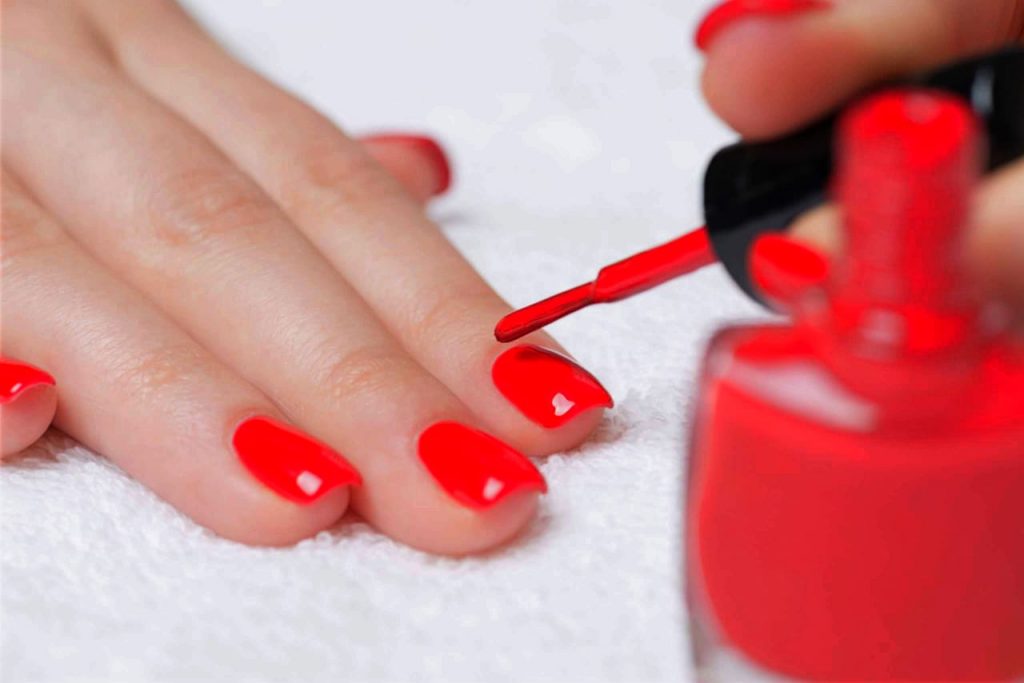
Japanese manicure
Asian manicure is aimed at fulfillment of several tasks at once: skin rejuvenation, restoration and strengthening of the nails. The master uses only natural care products and safe tools. As a result, the natural processes of rejuvenation and restoration are started. The nail plate is saturated with calcium, zinc, vitamins, etc.
Japanese manicure is suitable for owners of weakened and thinning nails, which do not have enough microelements for sufficient speed of regrowth. If the manicure is performed without coverage, it should not be done as often as with nail polish. Nails look natural, but at the same time well-groomed. The procedure has a number of features:
- the master uses only natural care products and does not work with cutting tools;
- the procedure is safe, suitable for pregnant and nursing women;
- with regular care after a couple of weeks the result will already be noticeable;
- manicure can be done in conjunction with other cosmetic procedures or separately;
- the procedure can be done at home, you only need to buy care products.
Before any manipulation it is necessary to disinfect the tools and treat the hands. Yes, masters do not use sharp and cutting objects, the risk of getting a wound and therefore getting an infection is minimal. But there are also bacteria on surfaces that carry the risk of infection.
Advantages of Japanese care:
- The effect after undergoing the course lasts for a long time. Even after a break or cancellation of Japanese manicure nails and hand skin look healthy, moisturized and well-groomed.
- Japanese manicure is recognized as one of the safest. The cuticle is not cut. It is softened with a special serum, and then pushed back to the base of the nail. Trauma to the client is minimized, because the master does not use sharp and rough objects in the work.
- Already after the first session, the result is noticeable. This technique requires regular visits and regular care, but already after the first visit, nails and hands in general look healthier and look well-groomed.
- The procedure is aimed not only at aesthetics, but also rejuvenation and treatment. Oils, extracts and natural extracts have a beneficial effect on the skin and nails, without affecting the body.
- Personalized approach to the client. You will not be offered treatment or rehabilitation until the condition of your nails, skin and cuticles has been examined. Initially, the master will conduct a thorough examination and then prescribe specific formulations to change the condition for the better.

